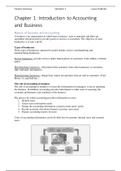Summary
Summary Finance Book Cengage chapter 1-5,9,14 International Business Year 1
- Course
- Institution
- Book
Cengage online book for finance summary with tables and pictures - chapter 1-5 and 9,14 - International Business Hogeschool Utrecht year 1
[Show more]




